Choosing the right eyeglasses frame color can really improve how you look, match style, and boost confidence. With so many colors and options available, it might feel hard to pick the best one. In this simple guide, we’ll look at the key things that affect your choice—from your skin tone to your fashion sense—so you can easily find the perfect pair for you.
The frame Color is very important
Eyeglasses are an important part of appearance, and the color of your frames can either improve or hurt your style. Picking the right color will bring out your best features and turn your glasses into a stylish accessory. Whether you want to make a bold statement or keep a simple, professional look, choosing the right frame color is necessary.
The Skin Tone and Frame Color Selection
Your skin tone is one of the most critical factors when choosing an eyeglasses frame color. There are three colors : warm, cool, and neutral.
- Warm Undertones: People with warm undertones look great in earthy shades like brown, tortoiseshell, and gold. These colors complement the natural warmth of the skin, enhancing your overall appearance.
- Cool Undertones: If you have cool undertones, opt for colors like black, silver, and blue. These shades contrast beautifully with your skin, offering a sleek, modern look.
- Neutral Undertones: Lucky enough to have neutral undertones? You can wear nearly any color! Both warm and cool hues will suit you, giving you a wide range of options.
3. Eye Color and Frame Matching
Your eye color can also play a significant role in determining which frame color will look best on you.
- Blue Eyes: Opt for frames in brown, tortoiseshell, or orange tones to make your blue eyes stand out.
- Green Eyes: Complement your eye color with frames in earthy greens or burgundy for a striking look.
- Brown Eyes: Darker shades like deep blue, black, or even bold red will enhance your brown eyes.
- Hazel Eyes: Hazel eyes offer versatility, allowing you to experiment with various colors such as bronze or green.
4. Hair Color and Frame Selection
Hair color affects the overall harmony of your appearance when paired with the right frame color.
- Blonde or Light Hair: Softer hues like rose gold, pastel tones, or light browns are ideal.
- Dark Hair: Dark frames like black, navy, or deep purple add drama and sophistication to your look.
- Grey Hair: Metallics like silver or even transparent frames can give a modern and chic edge to grey hair.
5. Face Shape and Frame Color Coordination
Face shape is another important aspect to consider when choosing a frame color. Here’s how to match your face shape with the perfect color:
- Oval Face: Most colors will suit an oval face, so feel free to experiment.
- Square Face: Softer colors like beige or light pink can soften the angles of a square face.
- Round Face: Darker shades like black or navy blue help add definition to round faces.
- Heart-Shaped Face: Go for lighter colors or rimless frames to balance out a heart-shaped face.
6. Fashion Preferences and Frame Color
Your fashion style also matters when picking the frame color. If you tend to wear neutral or monochromatic outfits, bold frames can become the centerpiece of your look. On the other hand, if your wardrobe is full of vibrant colors, a neutral frame color like black or grey will help maintain balance.
7. Professional vs. Casual Frame Color Choices
Different occasions call for different eyeglasses frame colors. For professional settings, it’s best to stick to neutral colors like black, brown, or grey, which offer a polished and serious look. For casual settings or special events, don’t hesitate to go bold with colors like red, blue, or even patterned frames.
8. Color Psychology and Eyeglasses
Did you know that the color of your eyeglasses can affect how others perceive you? Here are a few key insights from color psychology:
- Black Frames: Convey professionalism, seriousness, and power.
- Red Frames: Signal confidence and energy.
- Blue Frames: Suggest calmness and trustworthiness.
9. Seasonal Color Analysis for Eyewear
Seasonal color analysis is a method of determining which colors suit you based on your personal coloring—skin tone, hair color, and eye color.
- Spring: Warmer shades like gold and peach work best.
- Summer: Cool tones like light blue and lavender are ideal.
- Autumn: Earthy shades such as brown and olive green flatter.
- Winter: Bold, cold colors like black and white stand out.
10. Material and Finish Affecting Frame Color
The finish of the frame—whether it’s matte or glossy—can also impact how the color is perceived. Matte frames tend to look more understated, while glossy finishes can add vibrancy to the color. Different materials, such as plastic, metal, or acetate, also affect how the color appears in different lighting.
11. Gender-Specific Frame Color Trends
While eyeglasses are increasingly becoming gender-neutral, some color trends still prevail for men and women. Men often gravitate toward darker tones like black or navy, while women may opt for softer or more vibrant colors like rose gold or burgundy.
12. Frame Color Trends Over Time
Frame colors have evolved over the decades, influenced by fashion trends and celebrity styles. From the bold colors of the 1970s to the minimalist look of the 2000s, eyeglasses have seen many changes in color trends.
13. Celebrity Influence on Frame Color Choices
Celebrities often set eyewear trends, influencing the color choices of millions. Take Tom Cruise’s iconic aviator sunglasses or Walter White’s tinted frames—these famous styles have shaped consumer preferences for decades.
14. Practical Tips for Trying On Frames
When trying on frames, it’s important to consider the lighting, as natural light can show the true color better than artificial lighting. Also, take into account any changes in your skin tone due to tanning or makeup, as these can affect how the frame color looks on you.
15. Conclusion: Your Perfect Eyeglasses Frame Color
Selecting the right frame color involves considering multiple factors such as skin tone, eye color, hair color, and even your fashion sense. By following the tips in this guide, you’ll be well-equipped to choose a frame color that complements your unique look and enhances your personal style.
FAQs
1. How do I know which eyeglasses frame color suits me best? Consider your skin tone, eye color, hair color, and face shape to find a frame color that complements your features.
2. Can I wear bold-colored frames in a professional setting? Yes, but it’s best to opt for more neutral, muted colors like black or brown for a polished, professional look.
3. What are the best frame colors for fair skin? For fair skin, lighter shades like rose gold, beige, or pastel tones work well.
4. Do certain frame colors make my face appear slimmer? Yes, darker colors like black or navy can add definition and make your face appear slimmer.
5. Are there frame colors that suit all skin tones? Neutral colors like tortoiseshell, black, or clear frames tend to suit a variety of skin tones.
6. How do celebrities influence eyeglasses frame color trends? Celebrities like Tom Cruise or famous TV characters often set eyewear trends, making specific frame colors or styles popular.
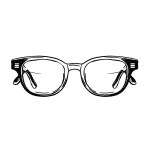 Reading Glasses
Reading Glasses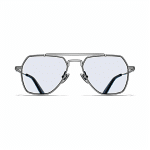 Sunglasses
Sunglasses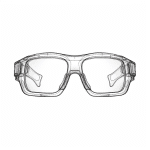 Safety Glasses
Safety Glasses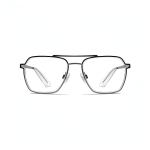 Optical Glasses
Optical Glasses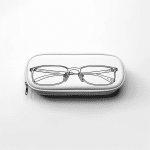 Accessories
Accessories